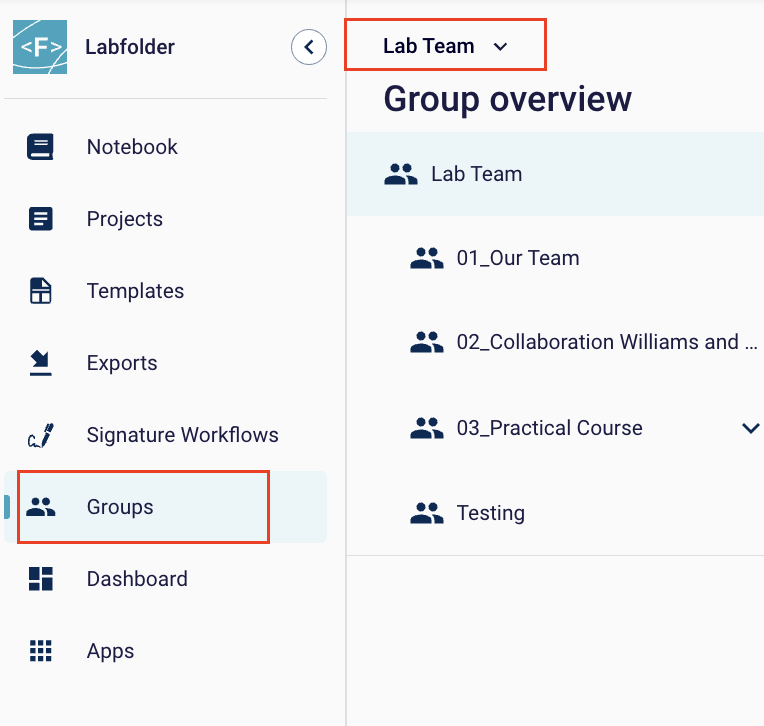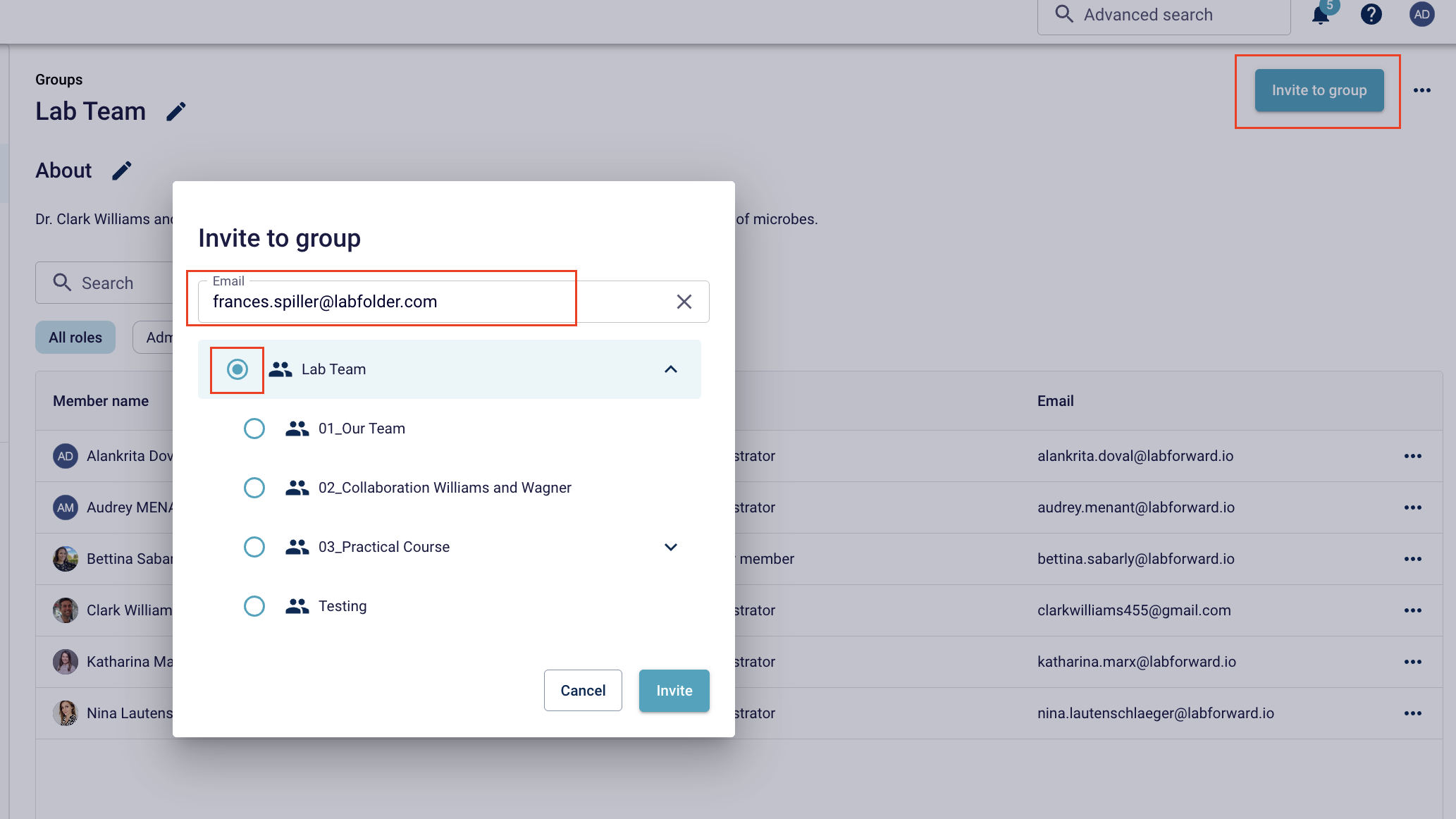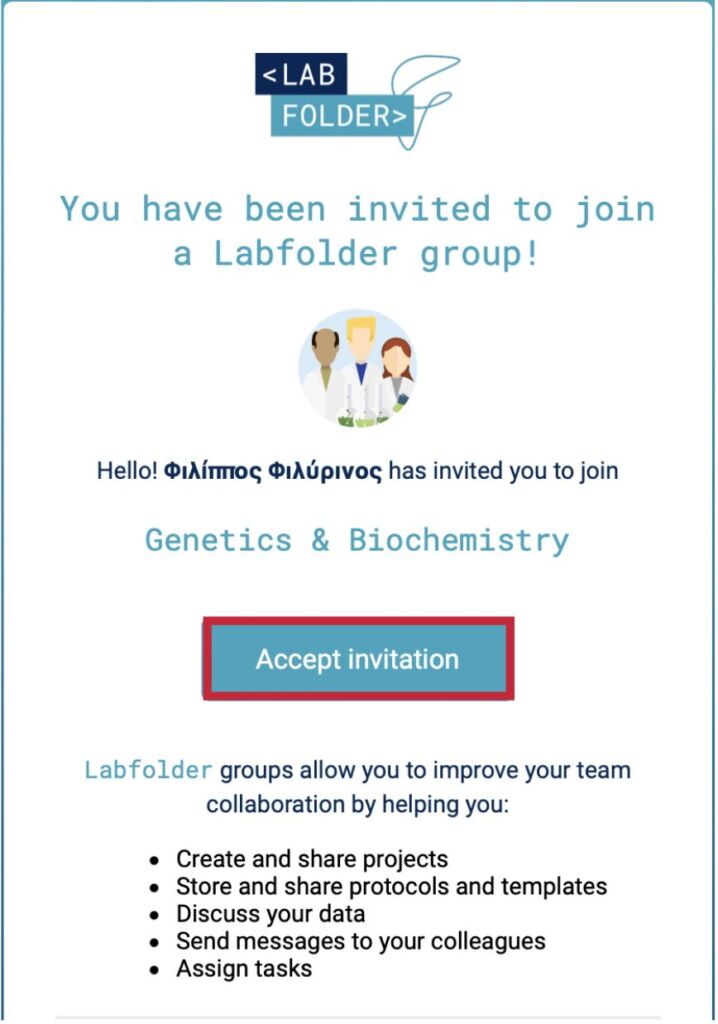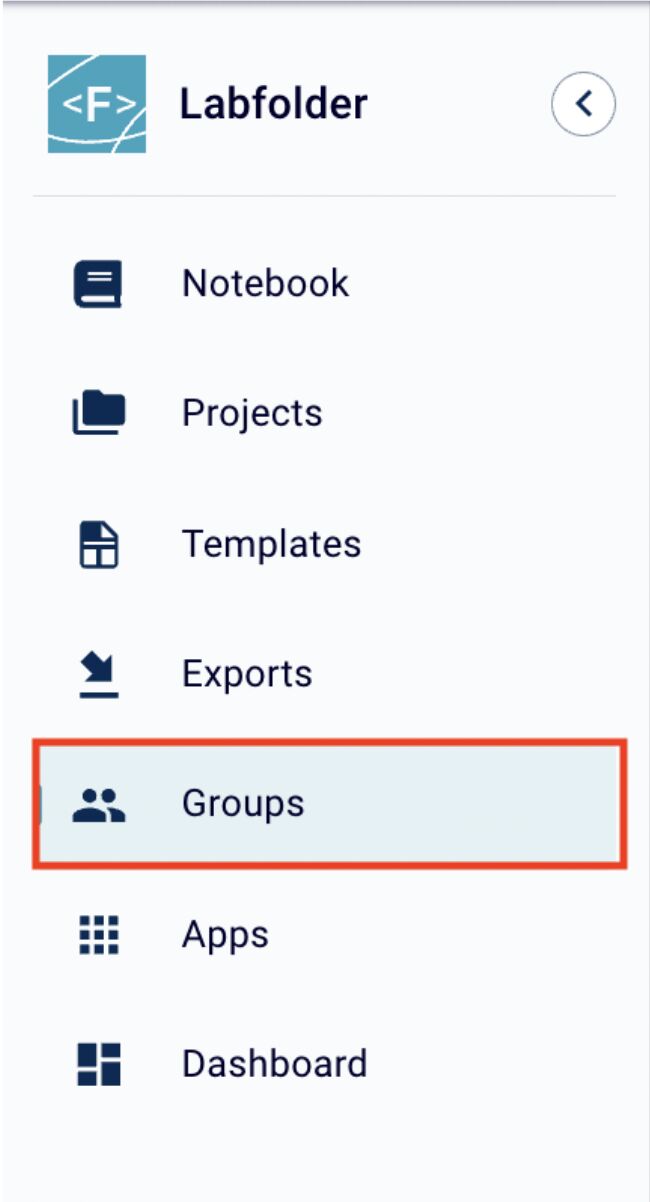Latest News:
New Support Material Available!
To download your MPG Welcome Packet please visit the How to get started tab.
To download your ELN transition guide or Labregister guide please visit the Self-training material tab.
Labfolder is an electronic lab notebook that allows you to organize, record and share data obtained in a laboratory on a secure platform. The Max Plank Digital Library (MPDL) licenses Labfolder via a central contract so that researchers can focus on its use instead of dealing with contracting and licensing costs. The official announcement, as well as a link to the press release, can be found here.
Integrate all your data directly into your records
Search and filter through full texts to find entries
Customize entries by dragging and dropping different elements
Collaborate with colleagues
Create templates and protocols for recurring workflows
Set up multiple databases to organize laboratory materials
Securely encrypted via SSL and backed up regularly
To see a full list of features, click here.

Doctoral Student
"We can keep a nice and organized track of our work and we are able to find things that we did in the past, even if the respective group member has left the group in the meantime."
Could you tell us a bit about your research and what you find exciting about it?
I am working in a research field that combines optics (microscopy, nano optics, laser technology) with biology (cellular interaction, viruses, DNA, proteins). I find it exciting that I work in a chemical, biological, and optical lab on a daily basis and combine all these fields to learn more about nature. I am working on my PhD thesis in the field of biophysics.
We just started to use Labfolder in our group as an electronic lab notebook. We document our experiments and research with Labfolder. The type of work that is carried out and needs to be documented is very broad, as we have physicists, biologists, and chemists working with the tool.
We can keep a nice and organized track of our work and we are able to find things that we did in the past, even if the respective group member has left the group in the meantime. We don't need to tediously search for entries in old hardcopy lab books or end up redoing the same experiments over and over again.
If you have a large group and work in different types of work, organisation can be tricky. Our experiments usually evolve around a specific optical setup. That is why we structured actual laboratory room numbers with folders and setups with sub folders. This allows to easily find notes about a certain project.
Additionally, we adapted the concept of a material database in Labfolder for large devices that we share within the group (like an atomic force microscope or a sputtering machine). When someone creates an entry, he can tag such an device in it. This allows for a easy search if you want to find all the things you (or also other users) did on a specific device.

Postdoctoral Fellow
"Starting with Labfolder was an important step in renewing our entire documentation system which allows us to distribute information in an easy way to new people in the lab."
Could you tell us a bit about your research and what you find exciting about it?
The focus of our research is to understand mechanisms that allow bacteria to adapt and differentiate in response to environmental changes. These include rapid changes in gene expression, regulation of cellular locomotion and cell cycle regulation. To investigate the underlying mechanisms, we make use of genetic manipulation and fluorescence live cell imaging as well as a variety of biochemical assays. This information is a prerequisite to understand how bacterial regulate these processes in space and time.
With Labfolder we have completely replaced our hand-written lab notes to a modern and sophisticated documentation system. We use Labfolder for our daily work by documenting experiments and results as well as sharing protocols within the different subgroups of the lab. Finally, we implemented Labfolder as a tool for inventory management of genetically modified bacterial strains, plasmids and proteins.
One important feature of Labfolder is that it keeps track of a lot of information. In addition it finds the single plasmid map you are looking for in many pages of documentation with its advanced search option. With this you spend less time on looking through pages manually and can spend more time on the important things in your research.
We use Labfolder to organize our inventory documentation of genetic plasmids and strains. We mark single entries with tags that can be found with the search tool. These entries can then be exported as pdf documents.
Our white papers section provides important information on compliance regulations and guidelines that are typically implemented in laboratories and how Labfolder helps you to comply to these.
Labfolder can be used on the central installation provided by the MPDL. All of your data will be securely stored at the GWDG. To create a new account, you must be connected to the Max Planck network. Once your account is set up, you no longer need to be connected to the network, and you will be able to log in to Labfolder from anywhere.
Each institute also has the option to install and host Labfolder locally. If you are interested in receiving more information about setting up Labfolder on-site, then please reach out to your support channel.
The currently existing local installations with their respective links are listed below. In order to access them, you must be connected to the MPG network and be a member of the respective institute.
MPI of Biochemistry
MPI for Multidisciplinary Sciences
MPI for Chemical Ecology
MPI for Chemical Physics of Solids
MPI for Chemistry
MPI for Dynamics of Complex Technical Systems
MPI of Experimental Medicine
MPI for Infection Biology
MPI for Molecular Genetics
MPI of Molecular Physiology
MPI for the Biology of Aging
MPI for Psycholinguistics
MPI of Molecular Cell Biology and Genetics
Our Labforward Welcome Packet combines all the important information on how to set up your electronic laboratory notebook. We provide you with useful tips on how to manage your Labfolder group and organize the projects page. We also share links to learning material and an overview of all our resources and offers.
Download your Labforward Welcome Packet
Within Labfolder, you are able to create a shared space, called Labfolder group. This will enable you to work collaboratively on your research questions and share common protocols with your team.
Manage > Groups.+Add button to Add a new group.Create.
As a group administrator, you can invite colleagues to join your Labfolder group — even if they haven’t created an account yet. Once invited, they’ll receive an email with the instructions to register and join the group.
To invite your colleagues, please follow the steps below:
1 Go to “Groups” from the navigation panel on the left.
2 Select the group you’d like to add members to.

3 Click “Invite to the group.
4 Enter the email address of the person you wish to invite, choose the relevant (Sub-)Group, and click “Invite.”

5 After sending the invitation, you can view the status in the Pending section of your group page.

Once you’ve joined your group, Labfolder becomes your shared digital workspace for real-time collaboration. You and your colleagues can contribute to common projects, build a central library of protocols, exchange feedback through comments to support troubleshooting, and assign or receive tasks to streamline your lab’s workflow and boost productivity.
If you were invited into a Labfolder Group, an invitation will be sent to your email address. To accept this Group invitation, follow these simple steps:
1 Open the email titled You have been invited to join a Labfolder group! from cloud@labforward.app. Click on the Accept invitation button in the middle of the message. The link to the login page will be opened in a new tab.

2 Login with your existing credentials. If you don’t have an account yet, simply create one using the button provided.
3 When signed in, navigate to Sidebar > Groups.

4 At the top of the screen all pending group invitations will be displayed and you will be able to accept or decline them.

To get yourself acquainted with Labfolder, we recommend that you take a look at our guide. Here, you will find step-by-step explanations and animations demonstrating how to use each feature.
Our website also provides a helpdesk where you can find frequently asked questions. Questions are sorted by topics, but you can also use the search bar at the top of the page to find them.
At Labforward, we are here to support you to successfully transition to Labfolder and have collected tips regarding all organizational aspects of the change process, how to communicate successfully with your team, and how to provide them with continued support.
Download our Tips for a successful ELN transition
We want to support you with the crucial task of lab inventory management and have created a step-by-step guideline on how to set up and maintain your inventory with Labregister.
Download Guide to set up your lab inventory with Labregister
Discover our complete video tutorial series for Labfolder and Labregister, designed to help you get started quickly and make the most of our digital lab solutions. Whether you’re new to the platform or just need a refresher, these short, easy-to-follow videos guide you through everything you need to know. From setting up your account and creating your first project to building protocol templates and managing your lab inventory, each tutorial is focused on real use cases to support your day-to-day work.
You’ll also learn how to collaborate seamlessly with your team using Labfolder’s electronic lab notebook and efficiently manage inventory with Labregister.
Hi, I’m Alankrita Doval, your dedicated Success Manager at Labfolder. I’m here to guide you through a smooth onboarding experience and ensure you feel confident using the platform from day one. Labfolder is designed to be intuitive and easy to learn, with a user-friendly interface, making it simple to organize your research and collaborate efficiently. With my expertise, I’ll provide tailored training and ongoing support to help you seamlessly integrate Labfolder into your daily lab routines. Let’s simplify your lab work and make collaboration easier together.
If you’re new to the platform and would like an introduction to Labfolder before picking a session, you can schedule a Kick-Off Session with your Labfolder Onboarding Advisor here:

In case you have any specific questions or requests, you can also contact our customer success team via customersuccess@labforward.io.
Ready to streamline your data management, boost collaboration, ensure compliance, and simplify daily lab work? Choose the Labfolder training session that best suits your team’s needs and set your ELN up for long-term success.
This training offer includes three options:
• Admin Training (30 minutes) Learn how to manage Labfolder groups, users, and project settings. This session is ideal for lab managers or group leaders responsible for the system’s structure and permissions.
• User Training (60 minutes) A complete introduction to Labfolder’s core features. This session equips your team with the knowledge they need to work efficiently with the ELN in their daily routines.
• Super User Training (90 minutes) A combined session tailored for group leaders and their teams. It brings together admin and user training in a single, interactive session—perfect for teams that want to onboard together and align from the start.
All sessions are interactive, with time built in for Q&A, so you can get answers to your specific questions and workflows.
Every researcher works with a number of materials, such as antibodies, chemicals or plasmids. You may even wish to catalogue devices that are used in your laboratory.
Using this built-in inventory system allows you to categorize your inventory lists and manage access rights appropriately. Additionally, you will be able to link your inventory items in your lab notes which can help you to increase traceability and reproducibility of your experiments.
Interested in managing your inventory with Labregister? Then book this session.
Schedule a Labregister Training
Usually, explaining all available features or going through tutorials is a great way to get started with a new software. But sometimes the really difficult questions arise only once you have actually started using your ELN. Do not hesitate to reach out to us via the support button in the ELN. Or collect all questions that you (and your entire team) have and book a dedicated Q&A.
Our team again has carefully chosen and prepared a new round of webinars. With these live sessions, you will get the opportunity to learn more about the various aspects of Laboratory 4.0
To keep yourself up to date on any server updates, such as the functionalities that have been added to Labfolder and which bugs were fixed, please take a look at our server release notes.
At Labfolder, our support team is made up of former scientists who understand the day-to-day challenges of lab work. We’re always happy to assist with any questions you might have about using our Electronic Lab Notebook (ELN).
• For general questions about Labfolder’s features and functionalities, feel free to contact us at: customersuccess@labforward.io
• If you’re experiencing any issues, unexpected behavior, or technical problems, please send a brief description along with relevant screenshots or videos to: support@labforward.io
/ feedback@labfolder.com. This helps us quickly understand and resolve the situation. We typically respond to all inquiries within 24 hours to ensure minimal disruption to your work.
We actively develop Labfolder based on the feedback we receive from real users like you. If there’s a feature you feel is missing, we’d love to hear from you! Let us know what functionality you’re looking for and what you’re trying to achieve — our team will gladly review your suggestion for future development.
Our website provides a helpdesk where you can find frequently asked questions. Questions are sorted by topics, but you can also use the search bar at the top of the page to find them.